Bodhisattva of the Biosphere: A Tribute to Joanna Macy (1929–2025) [Part 1]
Students around the world mourn beloved teacher and author who blended Buddhism, interconnectedness, and Deep Ecology; systems theory and cosmology; compassion, grief, despair, and action.
The first time I saw Joanna Macy—on a cool Seattle night in October 1990—she was standing on stage in a dark church with a giant, glowing Earth behind her.
Haloed by the circle of our sacred planet—a murmuration of cloud and color, shimmering with life; its alchemist oceans turning sunlight into species—Joanna Macy looked a bit like an ancient priestess. But her words addressed the urgency of now.
To the 1000 people assembled for the opening evening of the Earth & Spirit conference—organized by Fritz and Vivienne Hull of the Whidbey Institute—Macy stated, “We gather here because our planet is in trouble, and we know it.”
“We know about the devastation of our forests and our trees—and the old-growth forests with their life-giving trees. We know about the poisons that are leeching into our soils and seas and air. We know about the spasms of extinction that are wiping out our fellow species at a rate never before chronicled. We know about the exponential rate at which the forces of destruction, set loose by our kind, are eroding our very life support system.”
With the weight of a large stone splashing in the well of your heart, Joanna concluded, “It is truly a nightmare scenario.”
Macy had started her keynote speech by pointing out this unlikely fact that she should be standing in front of a massive image of the Earth—in a church, of all places.
“I have to tell you that I grew up in a space like this,” she said, reflecting on her religious upbringing. “It was the Fifth Avenue Presbyterian Church in New York”—adding, “That was before I learned about the Buddhadharma,” which prompted laughter.
“Now, that church was shaped a little like this,” Macy explained, drifting into a tone of nostalgia. “It had—I think the balcony at Fifth Avenue was a little more circular than this—but it was very wooden like this. A lot of nice paneling.”
“Big, central pulpit,” she recalled, rapping gently on the lectern with her knuckles.
“And I want you to knooooow,” said Joanna, exhaling with a soft laugh of relief, “what it feels like tonight”; her voice began to rise; “to be in a space like this”; her pace quickened; “and see, on a screen”—then she bellowed: “the image of our planet—our home!”
Her words rang in the space.
An Indigenous man from the Chinook tribe who had spoken earlier responded, “A-ho!”
For those of us alienated from the cosmological wellsprings of existence, to hear Joanna Macy speak, even once, is to be offered a new understanding of Earth; of self; of home.
“To be able to look into that,” Macy marveled, about the photograph of Earth from space. “Oh, thank you, Fritz, and thank you, Vivienne, and organizers… for showing the pictures of our planet and our home in a sanctuary.”
“I hope you are looking at those pictures as if—oh, brothers and sisters,” she effused, “I hope you are looking into it as if you were looking into a mirror. And saying, ‘Oh, that’s how I look like from space.’”
That is what you look like from space.
In the 35 years since this night, I have never forgotten the eco-satori that flashed through my bodymind at that moment—when Joanna stood silhouetted by the radiant Earth and told me, that is what you look like from space.
The Apollo missions as selfie-stick.
The “Blue Marble” as the ultimate group portrait.
“All our triumphs, and all our tragedies,” she continued. “All our individual gifts, and failures, flickering there. Reflected there.”
I realized in an instant that I scarcely understood what Earth was. That I could hardly begin to fathom what Earth means.
Like the first rush of an oncoming psychedelic, I shivered at the insight that humanity—like all beings—is a function of the Earth. An expression of, a mode of, a dream of the Earth. That the planet is the ultimate expression of sacredness. (Of course!) And creativity. And mystery.
“If I could have only known then,” Macy mused, recalling her childhood experience of church-going, “that I would walk into a space like this.”
“And then I knew coming in here this was a homecoming…”—she let her words bubble up until they overspilled precise coherence like a poem:
“… such as you don’t know there can be a homecoming like this, because you didn’t know it before, but you know it should have been there, you know?”
Letting out a short laugh, she continued, “And you come back. And you come back because it was more than when you were there before, and you know that’s when we’re heading…”
She was nearly chanting now.
“And you know it’s a coming home
that we’re all building together,
because this coming home—
we didn’t know that we are our planet,
and we’re going to survive if we can!Out of the love that’s in our hearts.
Out of the grief that’s in our hearts.
Out of the caring that’s there!”
This was Deep Ecology approaching religious fervor.
Looking back, I note that Joanna was 61 years old on that October weekend in Seattle. Having recently negotiated her second Saturn return, Macy was likely stepping into the fullness of her authority, beginning a long period at the peak of her powers.
I was two weeks past 21, and this was my first time really attending a “conference.”
All of the attendees were multiple decades older, except for two or three students from Reed College in Portland, Oregon. The crowd could be categorized demographically as “gray hairs.”
Yet, what I was hearing this night was more exciting to me—more enlivening—than anything floating around my young-adult horizons back in North Carolina. I was 2,845 miles from Chapel Hill—but in some sense, I had found home.
We come “to this remarkable gathering,” said Joanna, not simply to learn from each other new steps and new strategies.
“We come for more than that… I think we come to drink together from the deepest wells. The deepest wells of the spirit. We come in hopes to hear the song that has been sung through us since time began. It’s the song that burst forth in the forming of the galaxies. Our science—bless it—let’s us perceive that now, if we have the heart to open to our cosmic story.”
Here, as throughout her work and teaching, Macy’s vision and worldview align naturally with Thomas Berry’s and Brian Swimme’s emphasis on cosmology and the “story of the universe.”
“That song that sucked biology out of the rimming rocks, and that peopled our planet with the exuberance of lifeforms—that is what sings in us now. And we come that that be kindled, so we can hear it again—stronger. Because we want to become who we are. That’s why we’ve come here. And now that we, in our long planetary journey, have become graced with self-reflective consciousness, we take glory in those roots and can let the song sing through us.”
We come together so that, “by our intention, bold new forms can break through—burst forth.”
“New institutional forms. New ways of confidence. New ways of justice. New ways of economics. New ways of being together. New ways of farming. New ways of being on our Earth.”
Damn! (Is this what conferences are like?)
Joanna Macy’s words were among the most stirring I had heard in my 21 years.
Macy’s Words were like Water after Decades in a Wasteland
Have you ever felt a kind of claustrophobia of the soul? Like your mind and your spirit can’t quite breathe? Carl Jung once wrote that, “Loneliness does not come from having no people around you, but from being unable to communicate the things that seem important to you.”
I felt that way growing up in the late 1970s and 1980s in North Carolina. School was largely a drag. Sports were cool; but the intellect and heart yearn for more philosophical and artistic stimulation, not to mention tutelage.
Instead, thousands of hours were spent with friends sprawled across couches and carpets, clockwork-oranging a slate of mind-numbing TV shows notable for their inanity. Cacophonous cartoons and laugh-track sit-coms that sapped your imagination one episode at a time. Space Ghost, Super Friends, Speed Racer, Tom & Jerry, Hogan’s Heroes, The Three Stooges, Andy Griffith, Three’s Company, and on and on, all afternoon—forever.
This was no way to live.
The Reagan-Bush decade of the 80s was pretty bleak in general, and having to attend middle school, then high school, first thing every weekday didn’t help. (Stumbling into the kitchen and reading the “The Far Side,” “Bloom County,” and “Doonesbury” on the comics page was a tiny consolation.)
But by the late-80s, I began to see glimmers of light. The Power of Myth interviews between Bill Moyers and Joseph Campbell hinted at entire realms—Comparative Mythology?!?!—that no one in the halls of high school had bothered to mention.
When my friend, Stephan Snider, came to Chapel Hill High School with a copy of The Universe is a Green Dragon, by cosmologist Brian Swimme, the photographs of galaxies and nebulae in the front matter seemed like a portal beyond the confines of our parochial environs. A wormhole into a more enticing and meaningful possible future.
Soon enough, we were reading Matthew Fox and Thomas Berry, which is likely where I first came across the name “Joanna Macy.” Steve and I were falling into a cluster of writers that seemed to know and appreciate each other, and whose work was mutually illuminating and reinforcing:
Thomas Berry, Brian Swimme, Joanna Macy, Matthew Fox, Sister Miriam MacGillis, and Charlene Spretnak.
It was this constellation of teachers that drew Steve and me from Prescott College—a small, “eco-hippie” school in the mountains of central Arizona where we were students—to the Earth & Spirit conference in Seattle—where Berry, Swimme, MacGillis, and Macy would be speaking.
When her Friday-night keynote address ended with a prolonged and rousing ovation, including whoops and whistles from the animated audience, I wandered to the front of the church to meet Joanna Macy.
Several of us, including the students from Reed College, huddled around, conversing with Joanna, when she suddenly smiled broadly.
Ten feet away—and six-and-a-half feet tall—Brian Swimme was lumbering toward us, his face beaming. “Wooow!” he exclaimed. “Woooooooow!” He stopped and raised his palms toward Joanna, as if palpating invisible pulses of soul-force.
“The energy!” said Swimme, drawing out his words dramatically, in a reverential, slightly New-Age tone that was joking but also serious. “The ennn-eeeer-gggyy!” he repeated, wrapping Macy in a hug as we all laughed.
I did not know then that in a few years Joanna Macy would become a dear friend, a treasured teacher and colleague, and a generous supporter of my work. Or that, two decades in the future, she would include my poem, “love letter to the milky way,” in the 20th-anniversary edition of her soon-to-published instant classic, World as Lover, World as Self.
But somehow, standing there at the front of the sanctuary, I intuited—perhaps through what Macy calls “déjà vu from the future”—that whatever my life had been prior to this night—henceforth, it would not stray far from the pathway being defined by the thinkers embracing in front of me.
At some point during the conference, another speaker, Paul Gorman, quipped, “I’ve been thinking that, if they were to make a film of the new cosmology,
Joanna Macy would be played by Katherine Hepburn.
Brian Swimme would be played by Steve Martin.
And Thomas Berry would be played by Yoda,”
concluded Gorman, as the audience unraveled into laughter.
END OF PART 1.
Part 2 will continue exploring some of the core insights, ideas, and writings of Joanna Macy…
Thank you. Bless you. And Journey well, Joanna. We miss you immensely and love you forever.
Upcoming Events…
August 22-24 — Short course at Hawkwood (Stroud, UK). Creativity in a Time of Crisis: Poetry, Cosmology, Interconnectedness, and Democracy
September 5 — Keynote talk at Dublin City University (Dublin, Ireland) An Evening with Drew Dellinger in Dublin



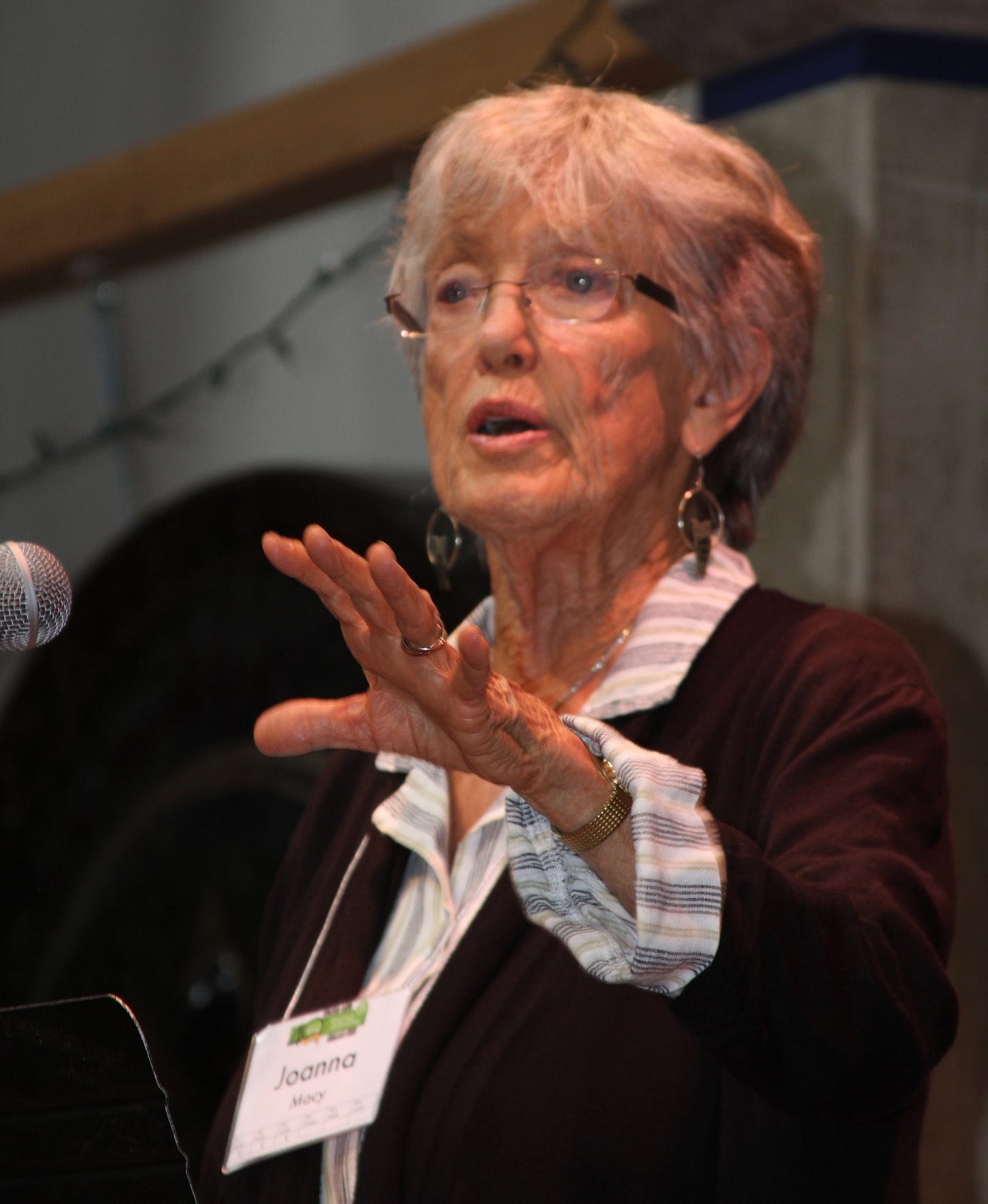
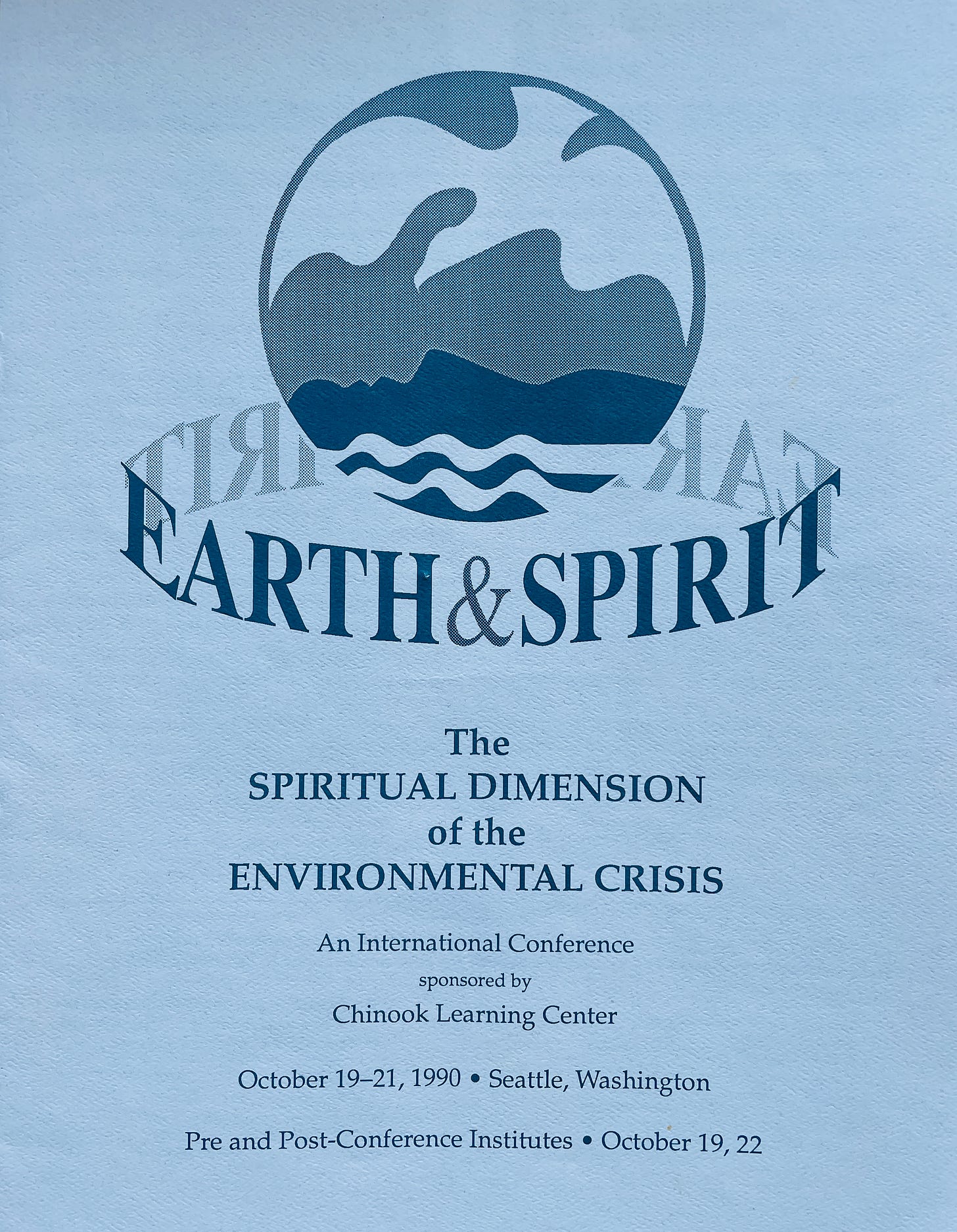
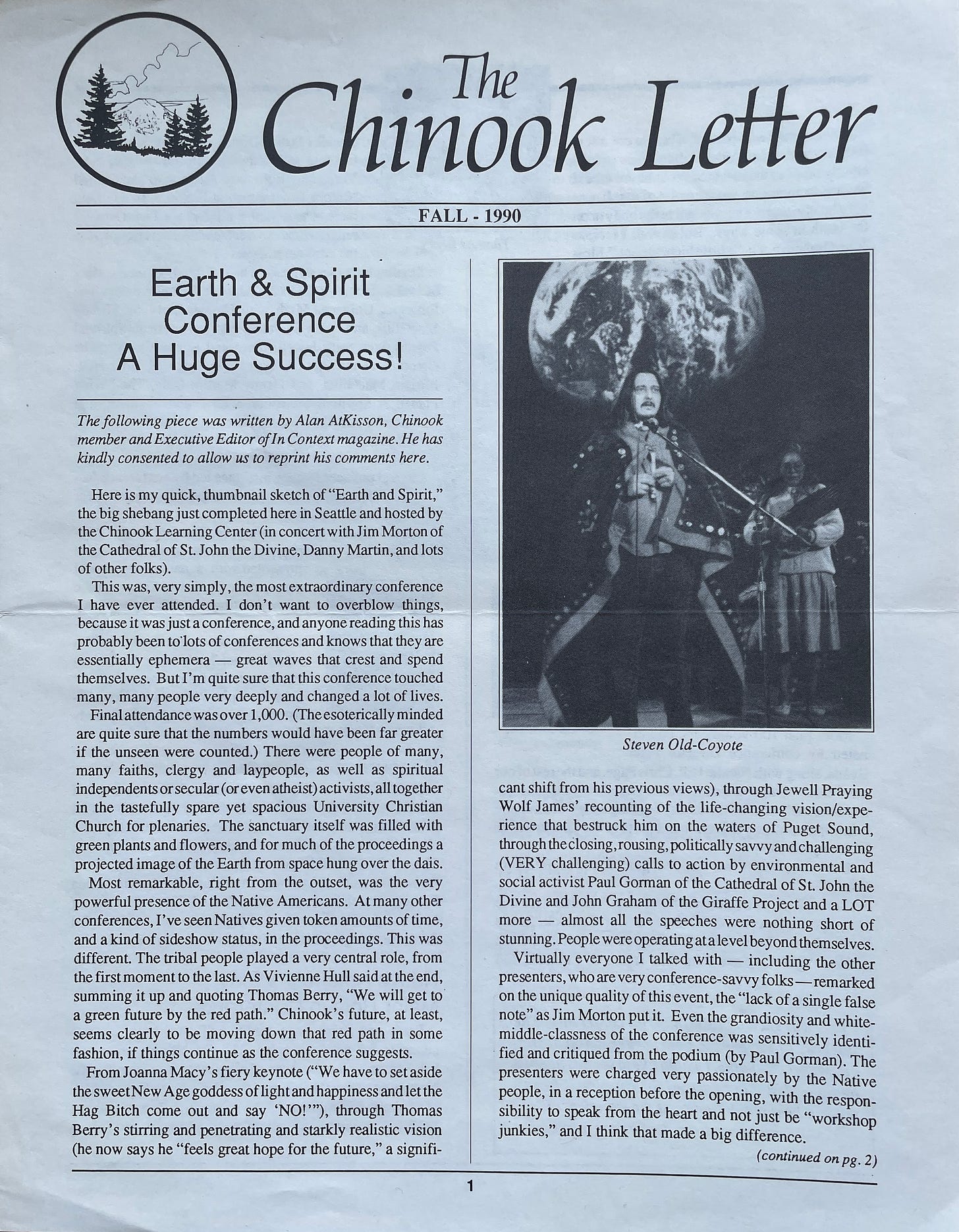
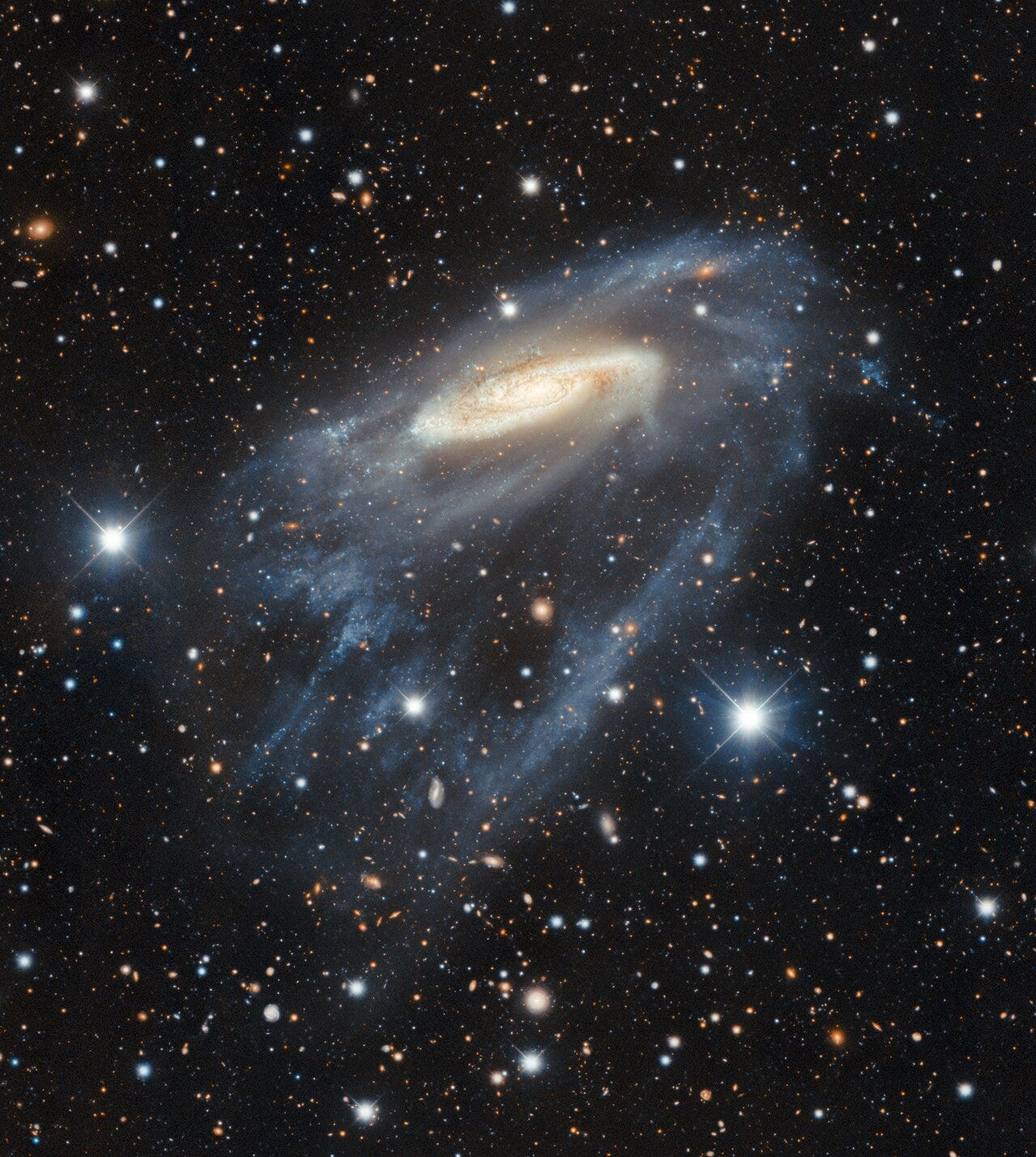
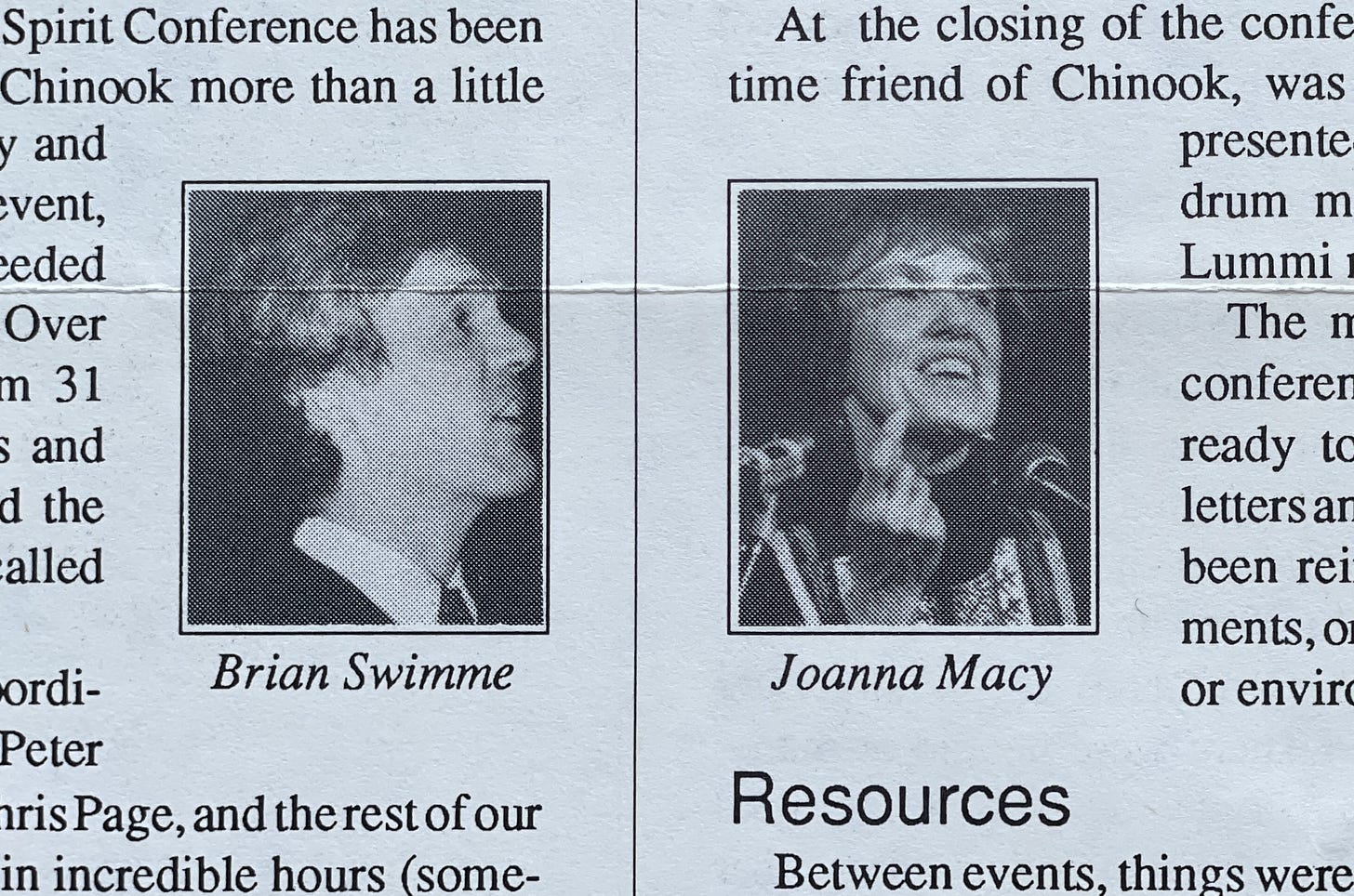
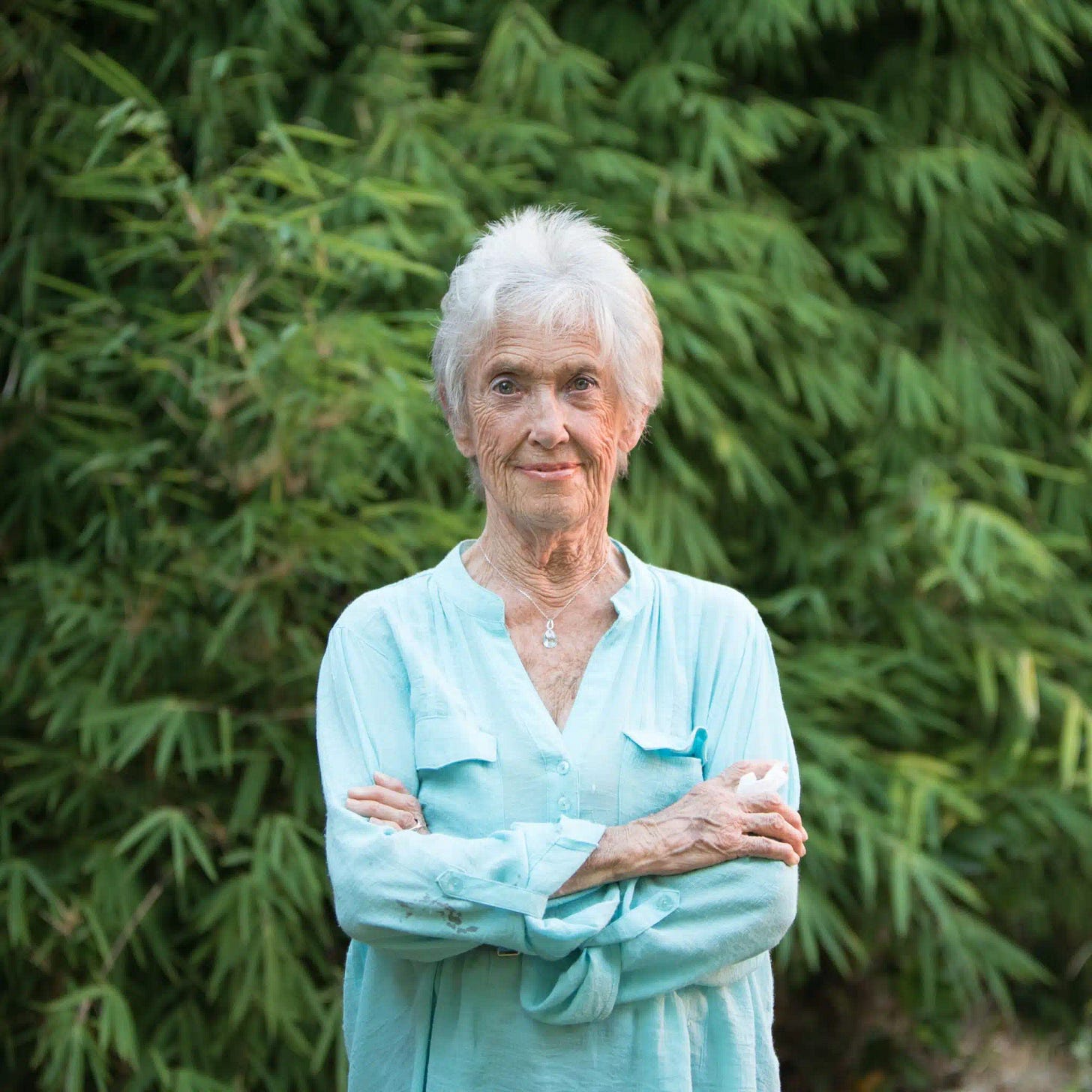
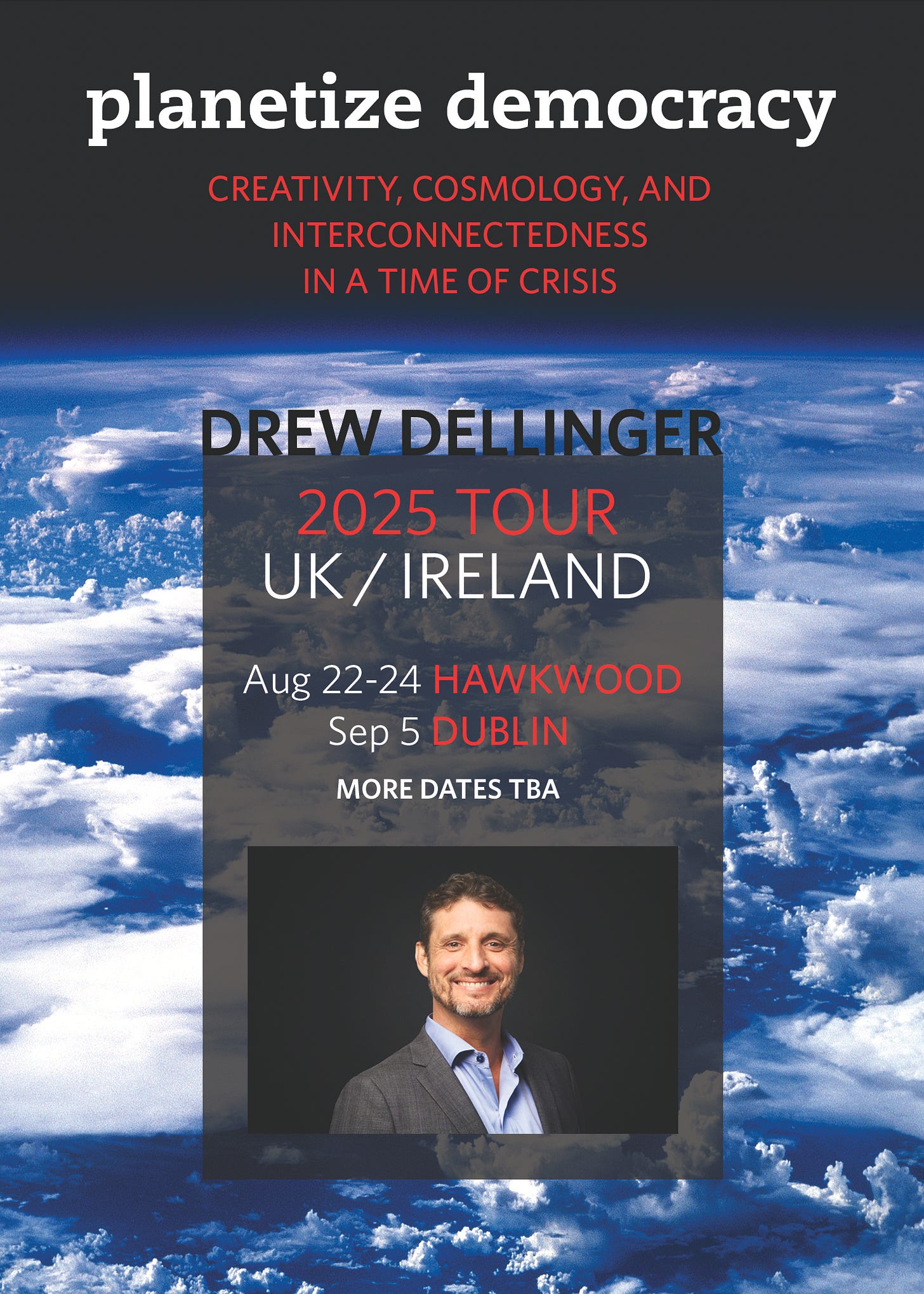
May Joanna soar with her fellow angels. 🙏🏼💕💫✨
Thank you for part 1 Drew and very much looking forward to part 2.
Beloved Joanna Macy whom so many of us have loved and admired, may her soul rest in peace and deep soulful ecstasy. I hope everyone who cares for our Mother Earth as she did will read my book The Call of Mother Earth: How a Being of Light Draws Forth HUmanity's Response. It's all in dialogue and people are encouraged to act it out or have a reading in a group.